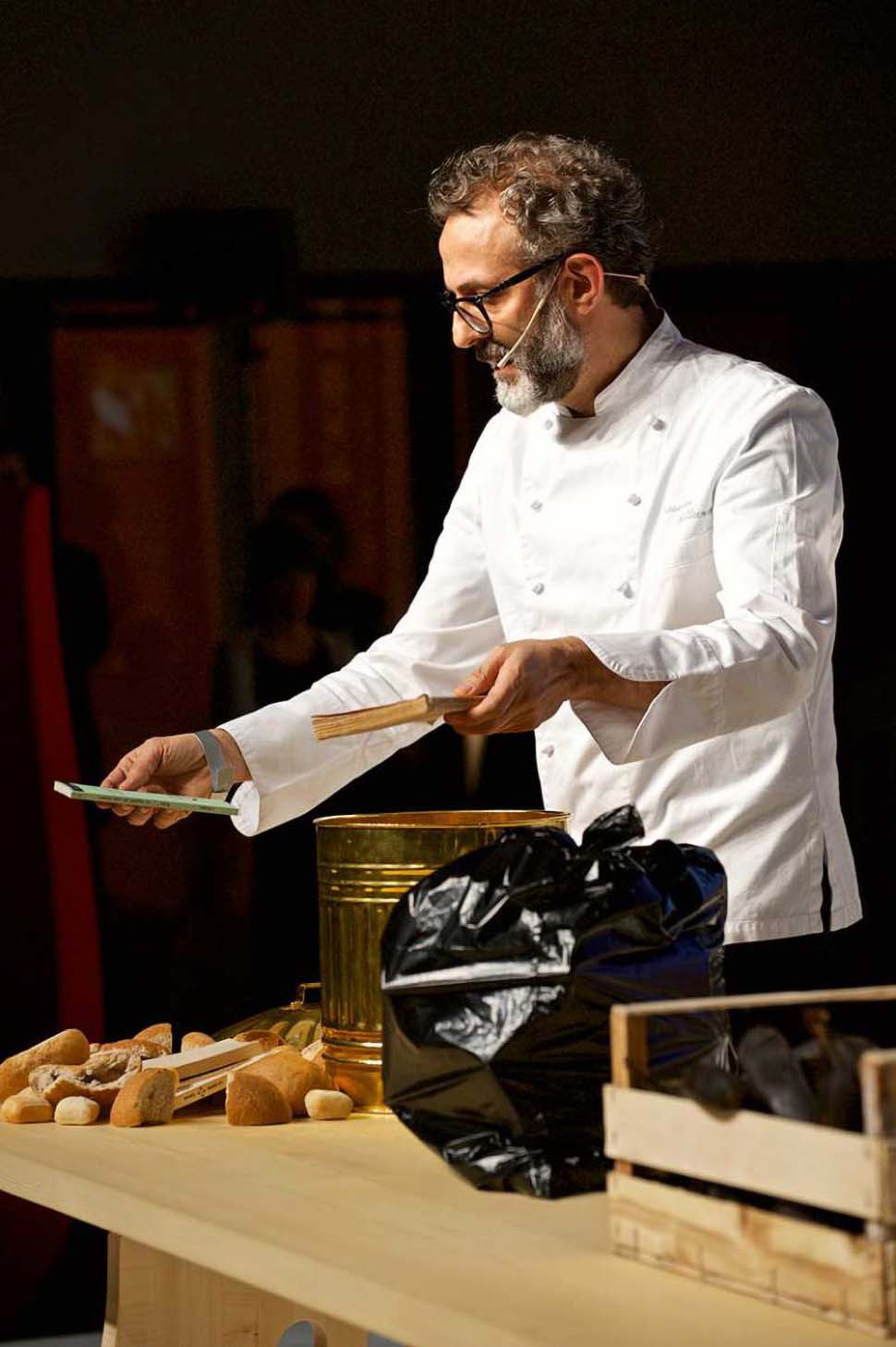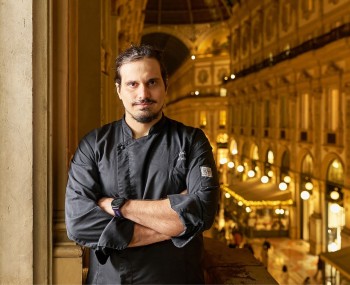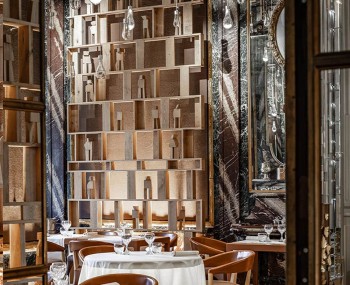The commitment to democratizing creativity, sustainability with a no-waste approach, and the fertility of chance are the concepts that inspired Massimo Bottura's pesto pasta recipe, where toasted breadcrumbs replace pine nuts. "Bread is gold, or at least a version of it, as it represents the entire project of the refectories beyond just the recipes."
The story
There's the engineer cook, the one who designs first and then researches suitable materials for the masterpiece, as is usually the case in fine dining. And then there's the bricoleur cook, the one who works with the materials at hand, interpreting their potentials.

This old distinction by Claude Lévi-Strauss can be useful in understanding certain types of market cuisine, especially when dealing with a volatile element like fish. However, it can also arise from a form of commitment and end up representing another path of creativity, as is the case in this spontaneous kitchen of fridge leftovers or the food truck. Here chance ends up guiding the mind, as historically happened in crucial phases of avant-garde movements.

In the refectory in Milan, as Massimo Bottura describes in the book "Bread is Gold," there's a fridge large enough to store ingredients for around a hundred dinner guests, along with as many children who often come for lunch. One day, the great chef wondered what he could serve, and upon opening the door, he saw it almost empty. It was, not coincidentally, the end of the month. "Nevertheless, the more I looked, the more I found. To my surprise, it was fragrant." There was a small container of basil on a shelf, probably a week old. And his thoughts immediately turned to pesto.

The dish
At that point, the usual surplus van from Expo arrived, sometimes full, sometimes empty. Always welcomed. However, the basil alone wasn't enough for the sauce. Why not add some mint and use breadcrumbs instead of pine nuts, following an age-old Italian tradition of humble cooking? The life cycle of this food isn't short: when it's no longer fresh enough to accompany a meal, it can become toast or bruschetta, and eventually breadcrumbs. A quick blend of the two herbs and the bread sautéed in oil, with a touch of ice to prevent oxidation and bitterness, and there you have it, a newly coined pesto: not Genovese, but just as brilliant and aromatic as the original. "I wondered if our guests would notice the difference. Bread is gold, or at least a version of it, as it represents the entire project of the refectories."
Massimo Bottura's pesto pasta recipe

Ingredients for 6 people
For the mint and breadcrumbs pesto
200 g basil leaves
50 g parsley leaves
120 g mint leaves
25 g stale bread in fine breadcrumbs
2 chopped garlic cloves
2 tablespoons plus
2 teaspoons extra-virgin olive oil
50 g freshly grated Parmigiano Reggiano cheese
1 teaspoon sea salt
Method
In a blender, combine basil, parsley, mint, breadcrumbs, garlic, and 5 ice cubes. Blend into a smooth puree. Add olive oil, Parmigiano, and salt, blend to incorporate.
For the pasta
1 tablespoon whole salt
600 g fusilli or other short pasta
Freshly grated Parmigiano Reggiano cheese for finishing
Method
Bring a large pot of slightly salted water to a boil over medium heat. Add the fusilli and cook until al dente. Toss the pasta with the pesto. Sprinkle with Parmigiano and serve.
Learn more about Massimo Bottura's Refectories project - Food For Soul
Address
Osteria Francescana












